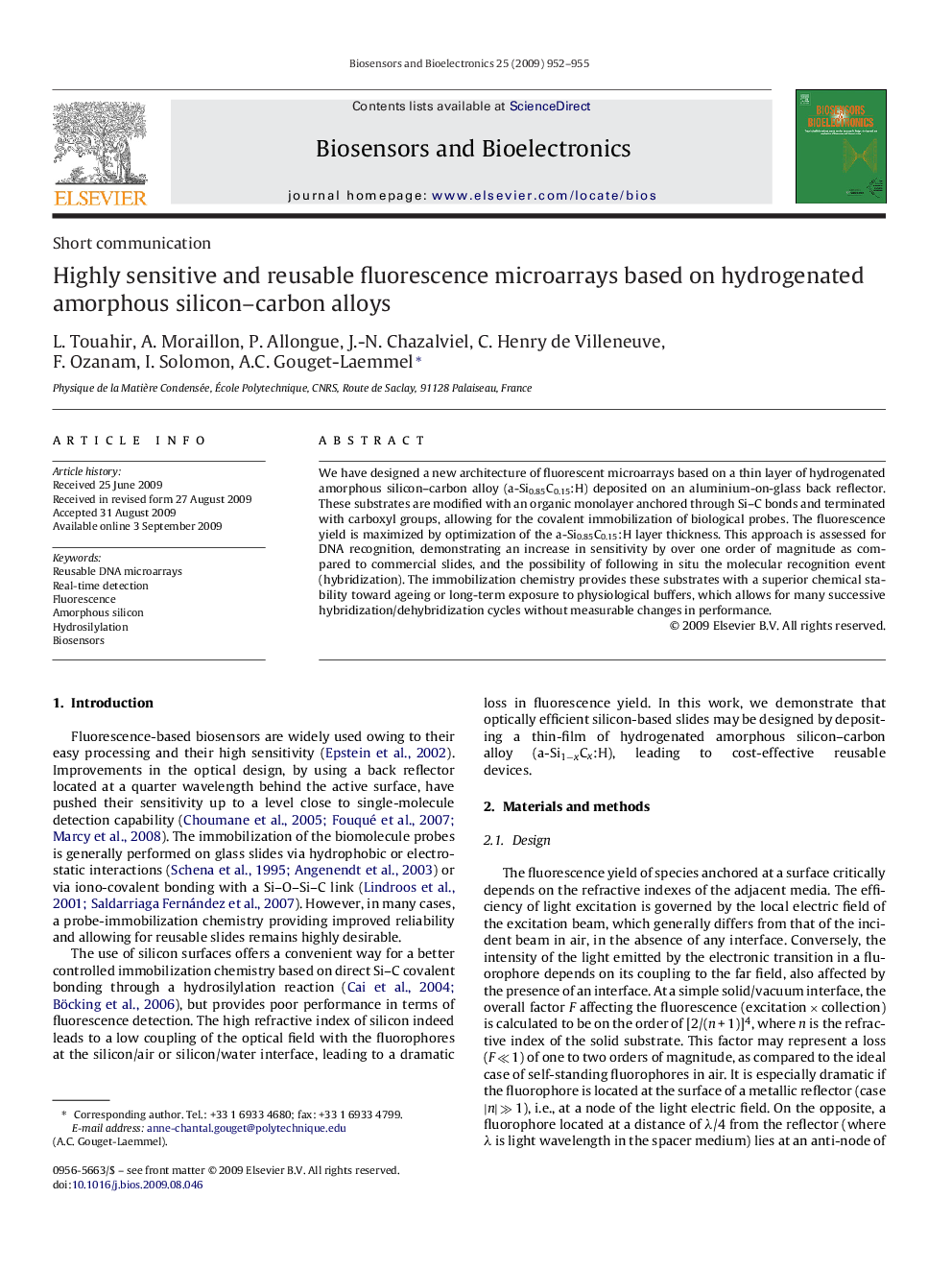| Article ID | Journal | Published Year | Pages | File Type |
|---|---|---|---|---|
| 868112 | Biosensors and Bioelectronics | 2009 | 4 Pages |
We have designed a new architecture of fluorescent microarrays based on a thin layer of hydrogenated amorphous silicon–carbon alloy (a-Si0.85C0.15:H) deposited on an aluminium-on-glass back reflector. These substrates are modified with an organic monolayer anchored through Si–C bonds and terminated with carboxyl groups, allowing for the covalent immobilization of biological probes. The fluorescence yield is maximized by optimization of the a-Si0.85C0.15:H layer thickness. This approach is assessed for DNA recognition, demonstrating an increase in sensitivity by over one order of magnitude as compared to commercial slides, and the possibility of following in situ the molecular recognition event (hybridization). The immobilization chemistry provides these substrates with a superior chemical stability toward ageing or long-term exposure to physiological buffers, which allows for many successive hybridization/dehybridization cycles without measurable changes in performance.
